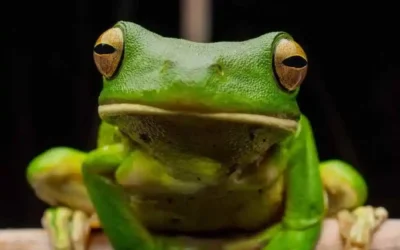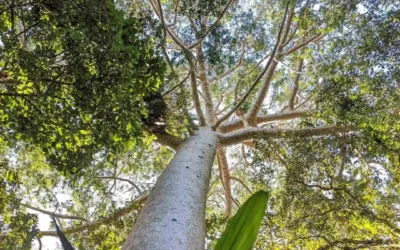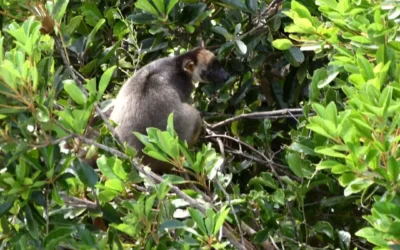An interpretation of the World Heritage tropical rainforest
Learn the awe-inspiring story of the World’s oldest continually surviving tropical rainforest.
An introduction to the Wet Tropics World Heritage rainforest.
Journey with us to unlock the secrets and discover the mystery of the world’s oldest continually surviving tropical rainforest on Earth, or as we like to call it The Ancient Rainforest.
Your fascinating journey will give you a rare perspective of this ancient landscape and you will learn about the intricate ecosystems, rich biodiversity, and the impressive story of this tropical rainforest’s survival through evolution.
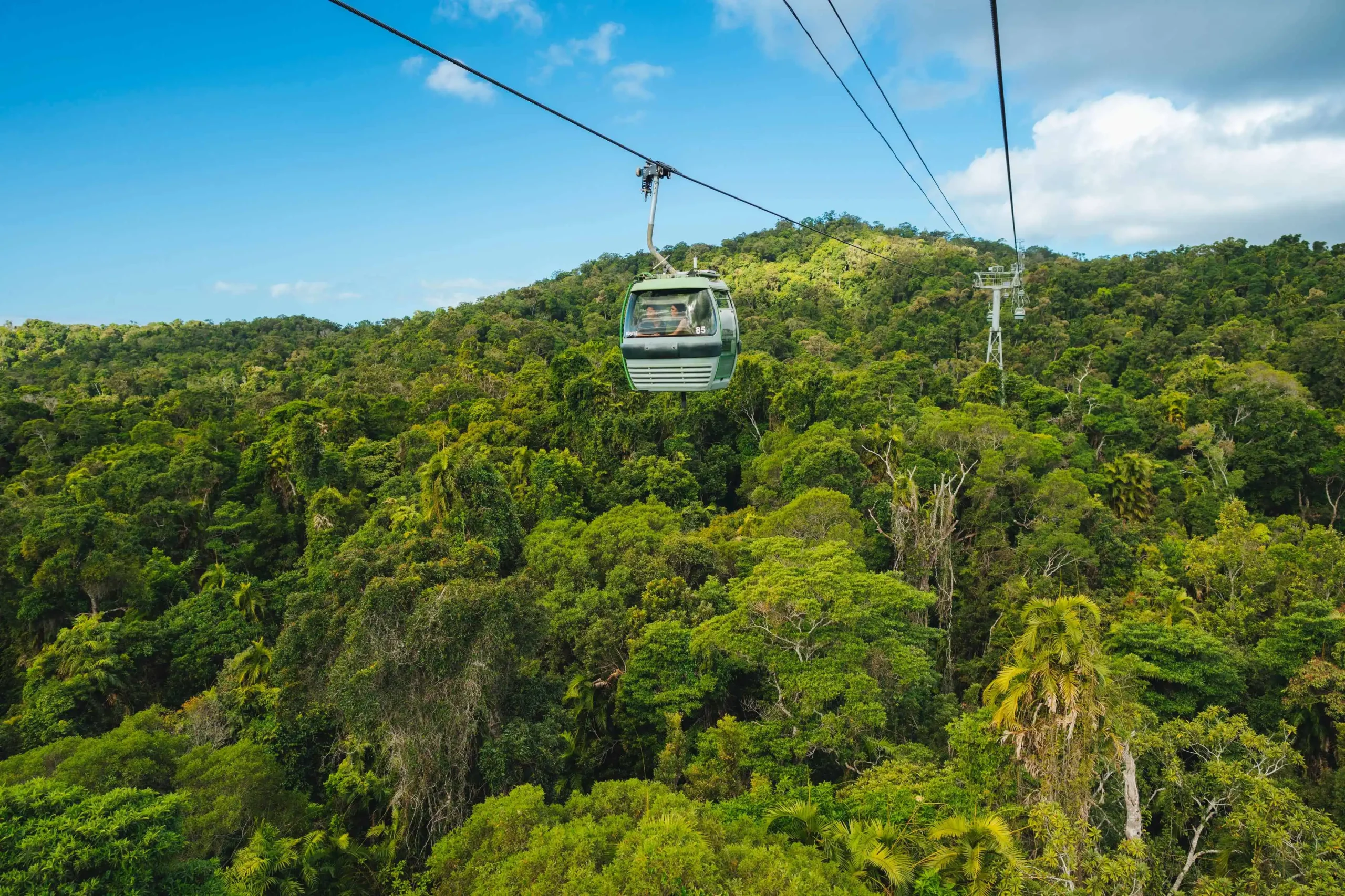
Skyrail gondola gliding above the tropical rainforest | Image Credit: Tourism and Events Queensland
Skyrail works continually to preserve this ancient landscape, which has been over 130 million years in the making, while providing a truly unique means to explore this beautiful area of Australia’s World Heritage tropical rainforest in a sustainable manner without leaving a footprint.
The Wet Tropics World Heritage Area has Australia’s greatest diversity of animals and plants within an area of just 0.26% of the continent. Many plant and animal species in the Wet Tropics rainforest are found nowhere else in the world. The diversity of plants and animals found in this unique environment is a treasure trove of curiosities that attracts visitors from around the world.
It is important that we provide visitors with more in-depth information and a better understanding of tropical rainforests, their ecosystems and evolution. As a joint venture with CSIRO (The Commonwealth Scientific and Industrial Research Organisation) in 1995, we developed a technologically advanced educational space – The Rainforest Interpretation Centre.
With an increased wealth of knowledge, we hope to turn our guests into advocates of our ancient landscape and inspire you to help protect and conserve rainforests worldwide.
Australia’s Wet Tropics World Heritage listed tropical rainforest
The Wet Tropics area was World Heritage listed in 1988 and is overseen by United Nations Educational Science Organisation (UNESCO). It encourages the preservation of natural areas considered to be of cultural value to humanity. In Australia there are currently 20 World Heritage listed sites in Australia which have achieved this UNESCO criteria, demonstrating importance of each unique environment.
This ancient pocket of Wet Tropics World Heritage rainforest that you will explore is one of the very few places worldwide which satisfies all four of the UNESCO criteria and demonstrates the importance of this rainforest environment, ensuring the ongoing protection and preservation for future generations.
Its unparalleled evolution has shaped the flora and fauna of Australia. Fossil pollen and micro-plant records indicate that the entire Australian continent 50-100 million years ago was covered with closed forests. A deep green forest landscape known as Gondwana.
Today the World Heritage listed Wet Tropical rainforest occupies a small coastal strip from Townsville to Cooktown encompassing 894,420 square hectares, only 0.12% of Australia’s total land mass. Quite a small area today for what used to cover the whole continent! 87% of the Wet Tropics Rainforest is protected and comprised of over 30 National Parks and State Forests which has significant national Indigenous heritage values and cultural connections to over 20 aboriginal rainforest peoples groups.
The Wet Tropics World Heritage rainforest that Skyrail operates in is Djabugay country and includes Din Din (Barron Falls), an area of cultural significance to the Djabugay people. According to dreamtime stories, a large carpet snake known as Buda-dji carved out the Barron River and all the adjoining creeks, creating this historic landscape known as the Barron Gorge National Park, which can be enjoyed best from The Edge Lookout at Skyrail today.
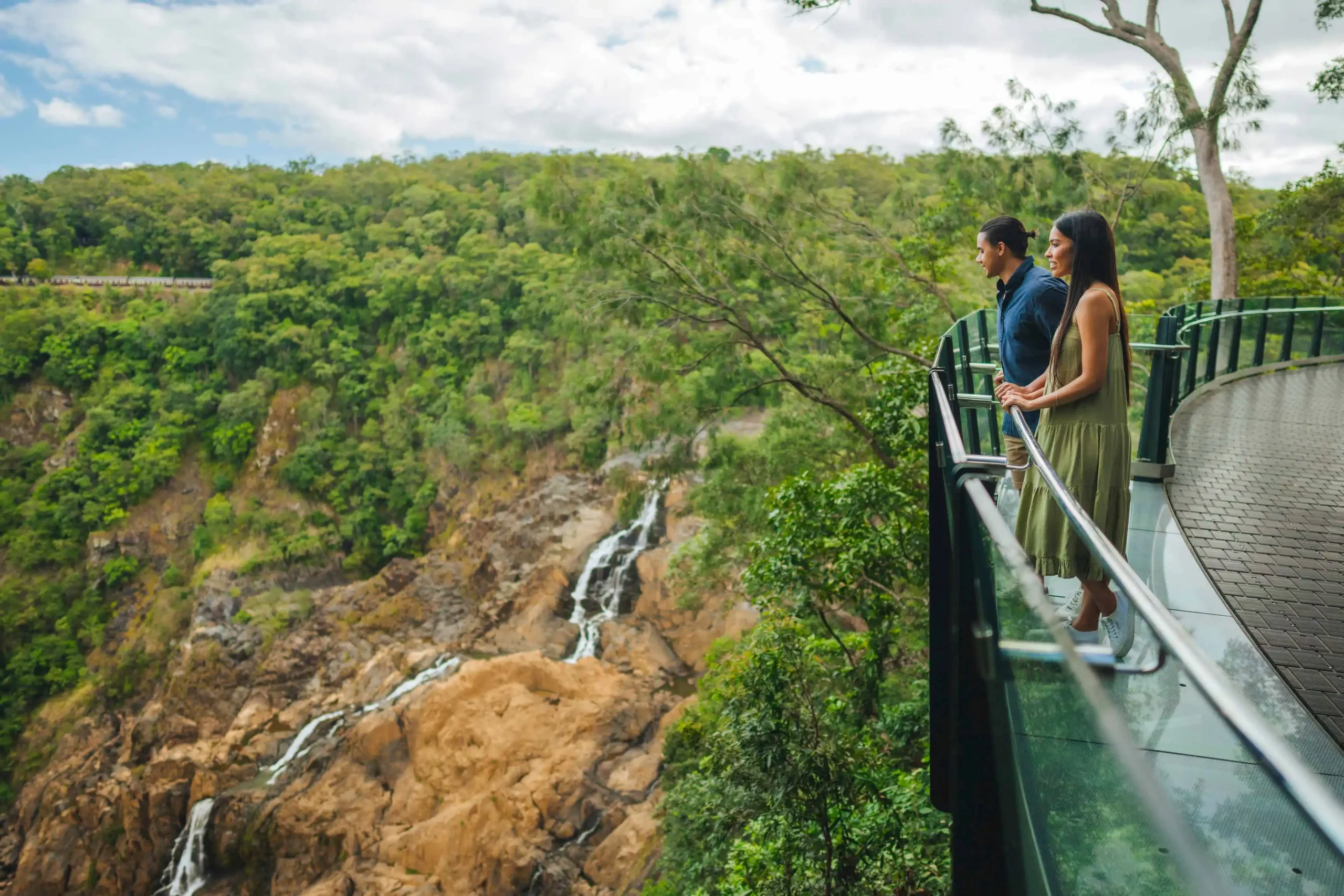
Skyrail’s The Edge Lookout | Image Credit: Tourism and Events Queensland
It is one of Queensland’s most picturesque national parks, an area of sweeping landscapes and outstanding beauty. A rugged and magnificent land of deep gorges, cascading waterfalls, intricate river systems, rugged mountains, and a stunning portrait of a million shades of green, creating the perfect home to a diverse array of vulnerable plant and animal life within its 2,820 hectares.
Let’s discover what a tropical rainforest is and what nature provides for the tropical rainforest to develop and thrive.
What makes the Wet Tropics World Heritage rainforest?
Rain
Putting the ‘rain’ in rainforest! Tropical rainforests exist in areas which receive between 1,500mm-1,700mm of rain fall annually, but here in Cairns we can record up to 4,000mm of rainfall, sometimes a lot more! The majority of this rainfall happens in our summer months, from December to March and creates the humid and misty feeling in the air that this Wet Tropics World Heritage rainforest thrives on. A fascinating process happens in the high altitiude tropical rainforests, known as cloud stripping. A process where the clouds move through and their moisture condenses on the massive surface area of the plants, wetting their leaves, branches, stems and trunks allowing the plants to harvest up to 30% more water.
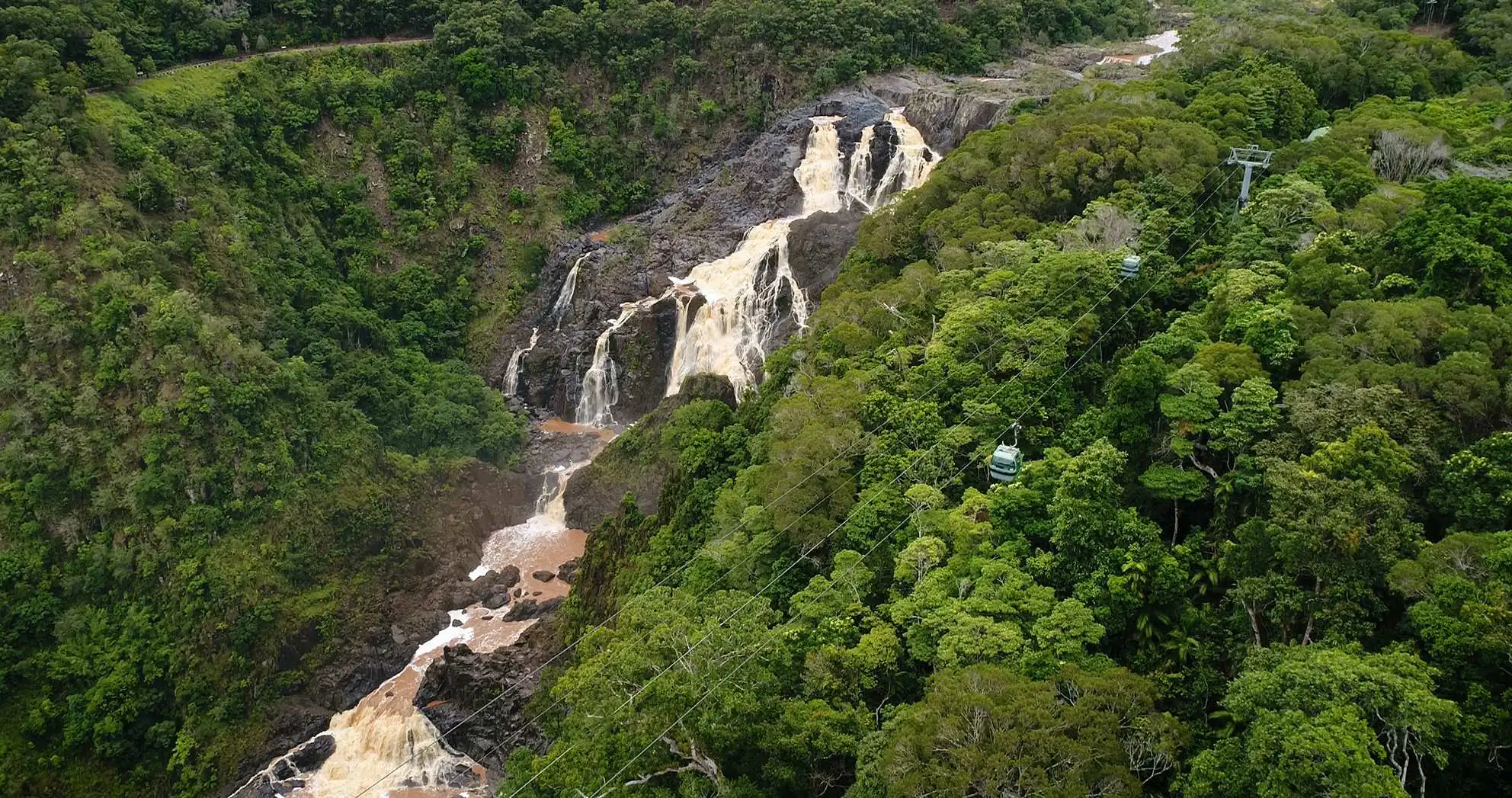
Skyrail Rainforest cableway over the Barron Gorge National Park
Sunlight
Sunlight is critically important to create the warm and humid climate that is needed in a tropical rainforest. Sunlight is filtered by the dense canopy casting a natural shade on the rainforest floor, which creates variables in temperature allowing a diverse range of plant life to exist and thrive. From the strong and impressive towering kauri pines, cycads, ferns, stunning orchids which grow high on tree branches, to the prickly climbing vines, all essential parts of the ancient rainforest we know today and its fantastic biodiversity.
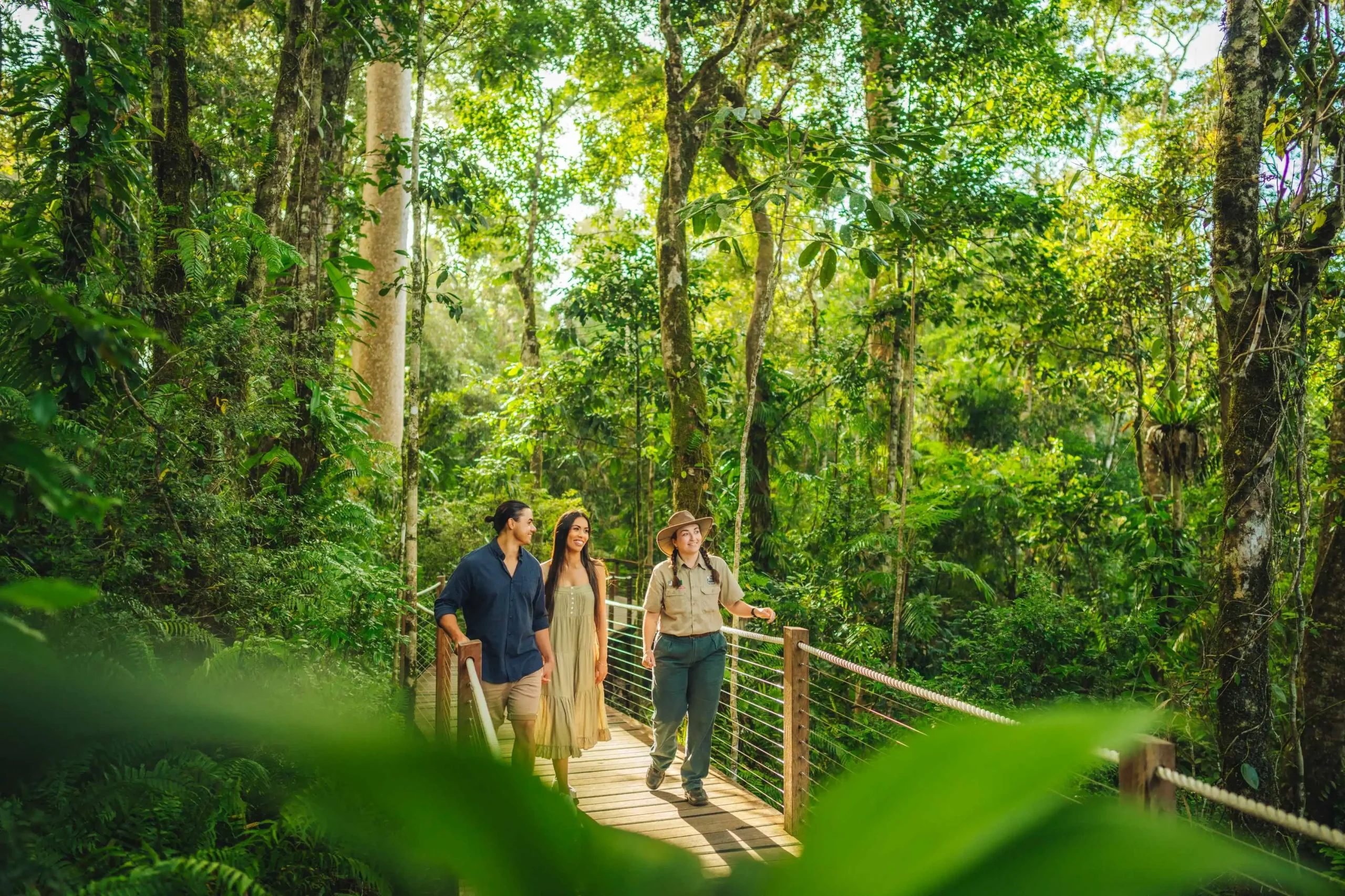
Complimentary Ranger Guided Tours at Red Peak during a Skyrail experience
Closed Canopy
Tropical rainforests have a high diversity of plant life; many are tall trees growing towards the sunlight. The leaves of these trees absorb sunlight and act to block this light from the forest floor, creating what is known as a closed canopy. The canopy shields the understory from harsh and intense sunlight, drying winds, and heavy rainfall and retains the moisture of the forest below.
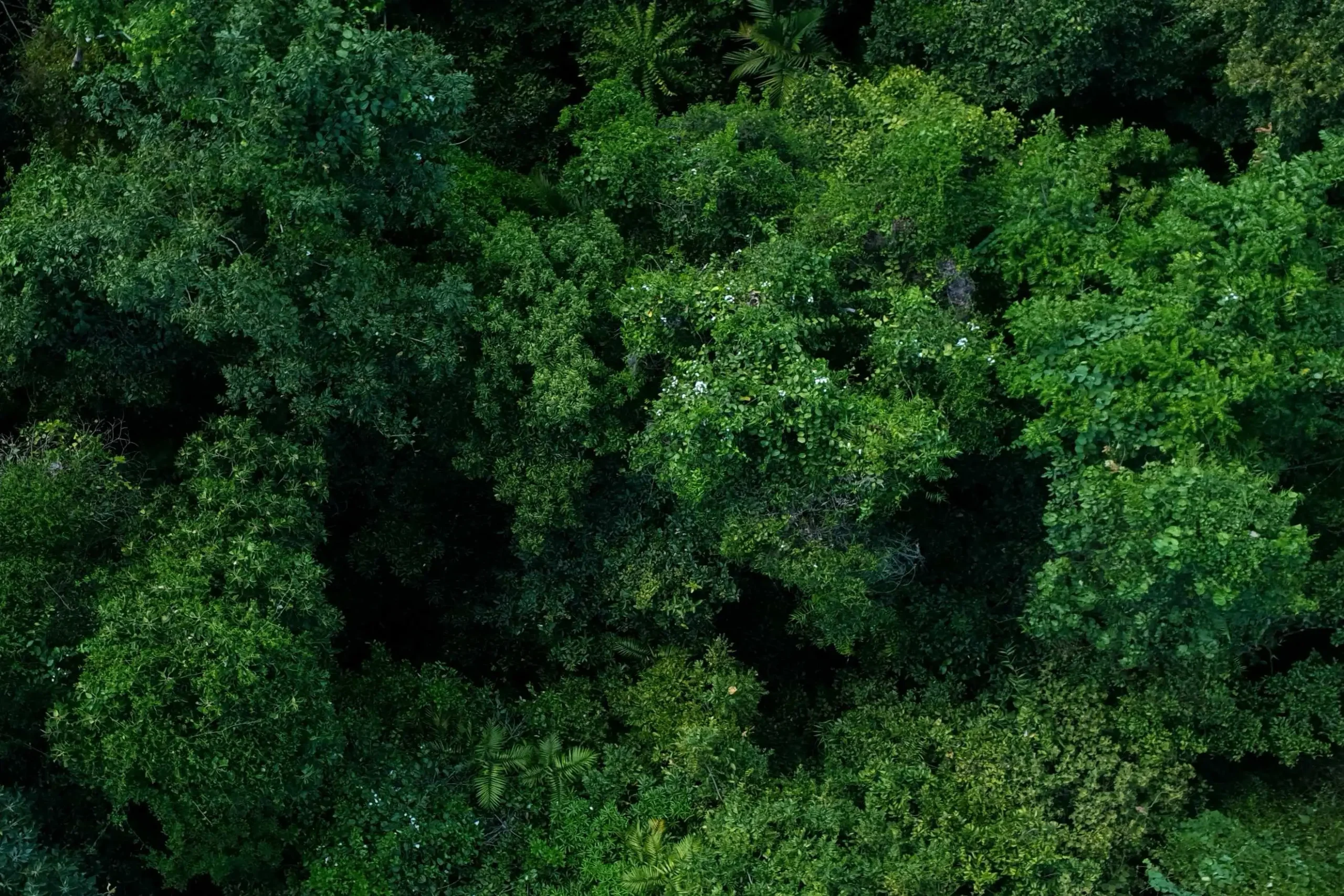
Lush green deep closed tropical rainforerst canopy
It’s fascinating and complex ecosystem with many impacting factors which has created this stunning Wet Tropics World Heritage rainforest we see and enjoy in Cairns today. Read Part two: Rich biodiversity of the tropical rainforest to discover more about this ancient landscape.
Pt 2 | Rich biodiversity of the tropical rainforest

